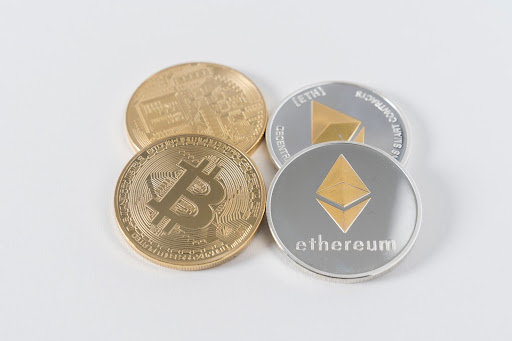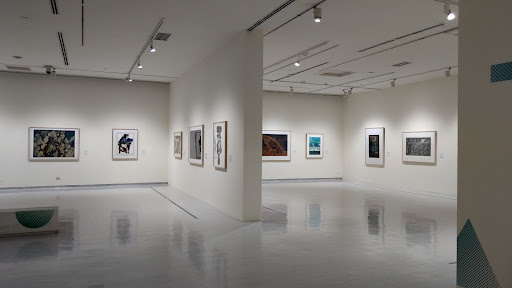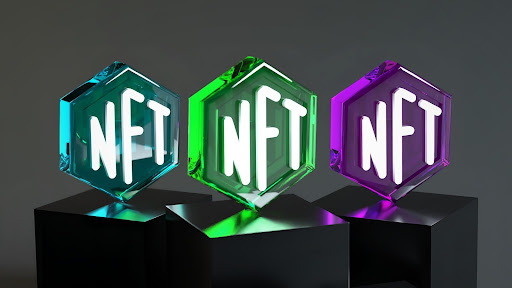In recent times, art connoisseurs are slowly adapting to the idea of art in the digital space. After all, beauty is beauty regardless of the medium through which you consume it.
NFTs or non-fungible tokens are one of the reasons why digital art has grown in popularity. Artists who were early adopters to the ideas of NFTs boast several success stories of their financial gain when they transformed their artwork into NFTs.
We mean, can you imagine earning a whopping US$6 million for your digital artwork? Synth-pop artist Grimes actually did in 2021, just days after she put her digital artwork up for auction.
She’s not the only success story. In March 2021, ‘The First 5000 Days’ a digital art collage by American artist, Beeple, was sold by auction house, Christie’s, for an insane amount of US$69.3 million!
The NFT gold rush is a real thing. Between October 1st 2022 and October 31st 2022, the NFT art segment had an aggregated sales value of approximately US$24.7 million.
In this article, we’ll explore how artists can cash in on the growing NFT craze and how NFT showcases have transformed the experience of purchasing digital art.
Before we get into NFT showcases, let’s take a quick look at what NFTs are and how they have contributed to the digital art experience.
What are NFTs?
The dictionary definition of NFTs describe them as unique, digital items with blockchain-managed ownership. However, this doesn’t quite encapsulate everything that NFTs are.
The main purpose of NFTs is, they allow a creator to claim complete ownership of the content they share online. They do this by being the digital identifier of unique virtual assets.
In a nutshell, NFTs are sort of the title deed for your work/assets in the digital world.
How Have NFTs Contributed to the Popularity of Digital Art?
The rise of NFTs are one of the main reasons for digital art gaining acceptance with the artist community. Earlier, if an artist were to showcase their work online, there was no guarantee that they would be fairly compensated for it.
Let’s face it, the world wide web has a far larger reach than any of us can control. Once something is posted online, it can be hard to keep track of where it goes and to whom it goes to. This often meant that popular artwork can be duplicated and the artist loses out on fair compensation for their work.
On the other hand, we’re living in a digital age and if an artist cannot share their work online, they miss the chance to build a connection with a larger audience across the globe. This is where NFTs have come to the rescue.
Since NFTs are powered by smart blockchain contracts, they give artists more control and ownership over their work. This enables them to not only track and sell their digital work online, it also allows them to create an identity and represent themselves the way they want to be seen.
How Do NFTs Differ From Traditional Art?
Apart from the obvious difference that traditional art exists in the physical world and NFTs exist on blockchain, there are other core differences between the two.
For starters, NFTs makes art accessible to anyone, anywhere in the world. For example, you can only view the original Mona Lisa painting in Louvre, Paris but NFT art can be admired by anyone as long as they have an internet connection.
NFT marketplaces like OpenSea and Rarible give art lovers the opportunity to explore new NFT art or re-visit their old favourites.
Preservation of NFT art is also easier. Since these pieces exist in the digital space they don’t require specific temperature or lighting and can look as good as new forever.
And finally, art is made to be admired. In the digital world, NFTs are status symbols that allow buyers to admire and show off their art to the world through their social channels.
Some NFTs, such as Bored Ape Yacht Club are even entry tickets to exclusive celebrity parties.
How Can Artists Turn Their Digital Art Into NFTs?
The first step to buy, sell, and trade crypto and digital assets, an artist needs to have a cryptocurrency wallet. This is a fairly simple process and isn’t too different from spending money in the real world. All the artist has to do is sign up for an NFT wallet and start spending their digital currency.
The next step is minting. This is where the artist can transform their images, audio, video, and 3D files into NFTs through a third-party platform.
There are several platforms such as OpenSea, Rarible, and Mintable (to name just a few!) that artists can use to mint their work into NFTs.
That’s pretty much all there is to it! It’s that simple.
Once a digital asset has been minted into an NFT, the artist will be given a certificate of authenticity and legal rights to the digital asset. The platforms also store this information in a decentralised database forever. This means, once minted, it’s impossible to edit, modify, or delete an NFT.
Is it Expensive to Turn Digital Art into NFTs?

The short answer to this question is both yes and no.
We say yes because artists may have to pay ‘gas fees’ to list their NFTs and store it in the database. Ethereum blockchain listings may cost up to $200. There are some platforms that don’t charge the artist, though. Instead, they may take the fee as an add-on charge from the first buyer.
Now, coming to the next point, the cost of listing an NFT is a small price to pay for the considerable returns you would gain if the digital art is a success. When you think of it that way, no, turning digital art into NFTs is not expensive.
Where Can Digital Artists Showcase Their NFTs?

- In the real world
Surprisingly, one of the best places for artists to showcase their NFTs is not in the digital world but in galleries IRL.
The advantage of showcasing NFTs at art galleries is two-fold.
Firstly, there’s the obvious pride that comes with exhibiting artwork in a gallery.
An NFT showcase at an art exhibition allows for the artwork to be properly presented. In the virtual world, artwork can get pixelated or colour clarity may be grainy when viewed on certain screens.
It can be hard to truly appreciate the artist’s hard work in its full glory when it is reduced to a screen.
Art galleries help make up for these possible issues by providing an immersive experience for viewers/buyers to experience the art at scale without the distractions of external stimuli.
Alternatively, artists can also create an immersive experience by creating exhibits at stunning venues across the globe that go with the theme of their work.
The artwork is still in the digital world, the exhibit is just the bridge between technology and real life.
- In the digital world
Welcome to the world of digital art galleries.
Just like how an artist scouts for the perfect gallery to exhibit IRL, the metaverse has its own set of virtual galleries and auctions. In fact, artists can also ‘buy’ digital art frames to display their work!
That’s not all, the digital world is quite literally a playground for artists. Here, artist’s can even ‘buy’ digital land which they can use to build a virtual gallery to exhibit their NFTs.
Platforms like Spatial make it easy for artists to build their own art galleries in the metaverse.
Pretty cool, right?
How Can Artists Sell Their NFTs?
Selling art pieces and selling NFTs are pretty similar. In order to add value to the work the artist must create unique pieces and have an audience for those pieces.
We can’t help artist’s create unique and memorable artwork but we can help them build an audience for your artwork.
One way artists can do this is by creating a social media page to showcase their NFTs. It’s also important to actively engage with their social media audience. In fact, Twitter is known to have several NFT enthusiasts and can be a great place to find potential buyers.
Another way to build an audience touchpoint is to provide an immersive experience for the art work. This can be done through a real life art exhibition.
Check out the impressive collection of event venues at Spacehuntr. From art museums to architectural wonders and modern exhibition rooms, artists can find several cool venues to host their next art exhibition here.

